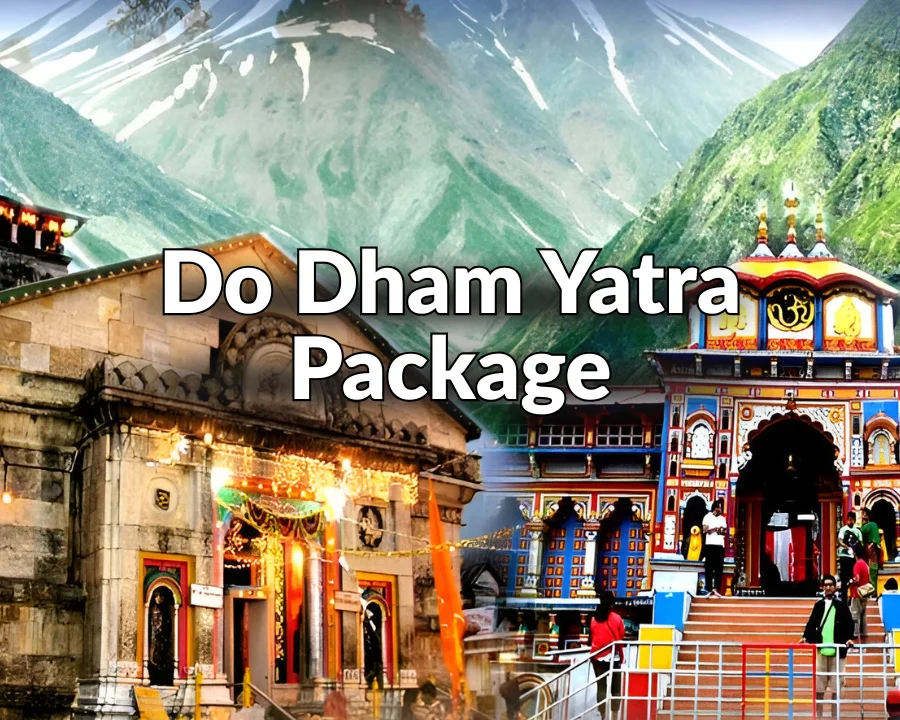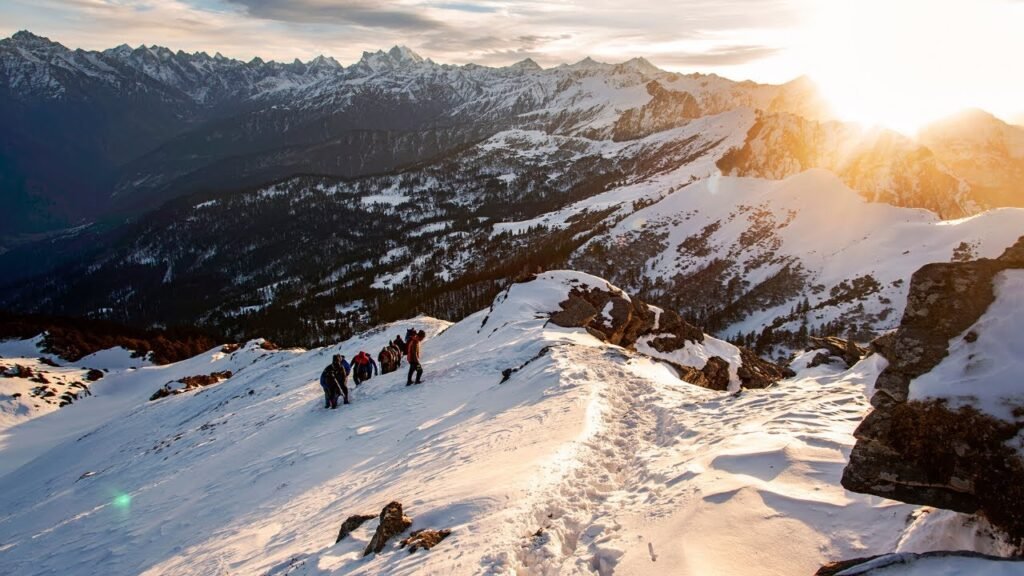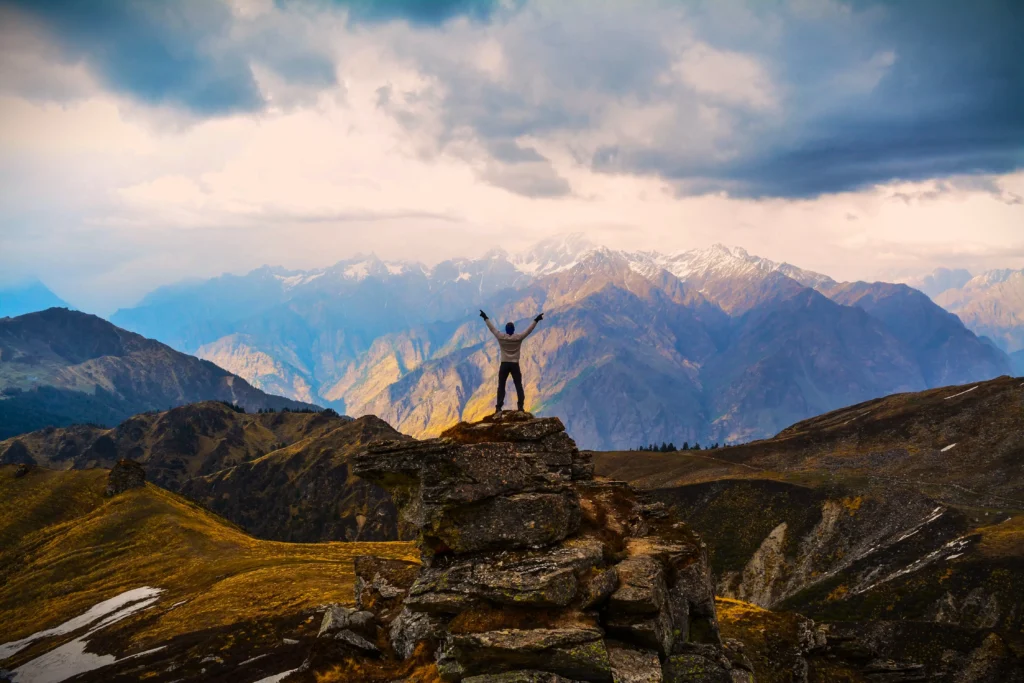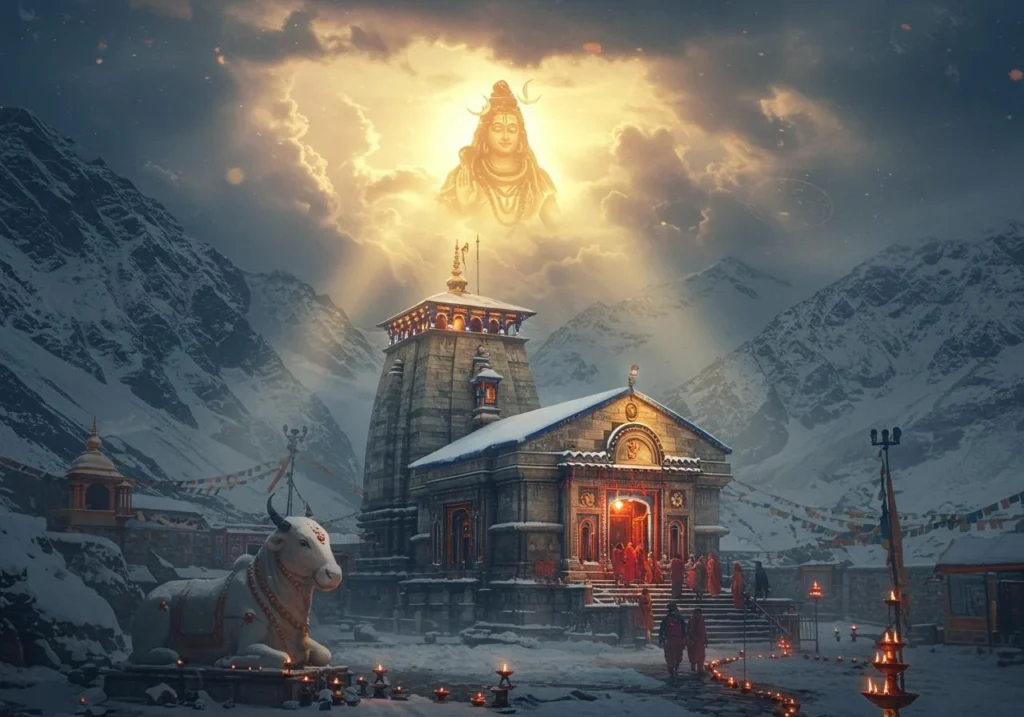
Nestled high in India’s Garhwal Himalayas, surrounded by miles of snow-dusted peaks, is a divine place of formidable spiritual energy: the Kedarnath Temple. This isn’t just a place; it’s the end point of a holy journey, a kind of pilgrimage site that has attracted worshippers for generations. The air above is thin but heavy with piety, the terrain is rugged but almost painfully picturesque, and the road itself an uphill journey that soars just as it climbs. The Kedarnath Yatra is so much more than a trek – it’s an exploration of faith, a journey with the gods against the backdrop of immense natural beauty. It is a journey that pushes you to your physical brink while raising your soul, and it leaves its mark on everyone who heeds the call.
About the Kedarnath Yatra
Kedarnath Yatra is a spiritual journey to one of the twelve Jyotirlingas of Lord Shiva. Located at an elevation of 3,583 meters (11,755 feet) near the head of the Mandakini River, this temple is a symbol of faith and perseverance.
Some History and Legend
The Kedarnath Temple has mythical connections to the Mahabharata. The Pandavas also believed that as they were the reason for killing their kin in Kurukshetra war, they realized seeking penance in the Himalayas and search of lord Shiva. Shiva, however, escaped them by turning into a bull. When Bhima attempted to catch him, he vanished into the ground (to later resurface in parts of India), leaving behind a hump on this spot. It is believed in the area that his remaining body parts other than the navel showed up at four other places, and are now worshipped there some body parts –the arms (in Tunganath), face (in Rudranath), hair (Adi Kailash) and stomach / nabhi (in Madhyamaheshwar). Together, these five sites constitute the Panch Kedar.
The present stone temple is believed to have been built by the 8th century philospher Adi Shankaracharya, who re-established Jyotir Math as a religious site. The temple’s solid architecture has withstood hundreds of years of severe weather and avalanches—and even floods, including the catastrophic one in 2013—all to be seen as a structure that the gods miraculously spared from destruction.
The Sacred Temple
The Kedarnath temple is a large structure made of heavy, cut grey stones. Simple in design, it consists of a garbha griha (sanctum sanctorum) where the hump of bull is worshiped, and a mandapa decorated with various deities amd mythological scenes. The feeling inside is electric, with the sound of chants bouncing off the walls amid the smell of incense – an experience that moves every pilgrim in return.

What makes the Kedarnath Yatra so special?
Apart from its religious importance, the Kedarnath Yatra is a combination of adventure, nature’s beauty and cultural salience.
A Deep Rift in the Ocean: Believers believe that this journey leads directly to moksha (salvation). That’s regarded as a way of penance and the arrival in temple is an insipid spiritual joy. The atmosphere of devotion born from so many pilgrims all flowing upwards together is amazing.
Stunning Scenic Trails: Kedarnath Temple Trek is one of the most picturesque treks in the Himalayas. From the roar of the Mandakini River, through dense rhododendron and oak forests and past cascading waterfalls, the trail meanders on. Gradually, as you rise the terrain widens up to provide an extensive view of huge snow-covered peaks and specifically, views of Kedarnath peak (6,940 mteres).
Cultural significance: It is cultural richness at its best. You will encounter people from every denomination and every region of the nation, but everyone has a story about Jesus. People in the remote villages of Garhwal are friendly and make you a part of their life, simple yet tough one at very high elevation.
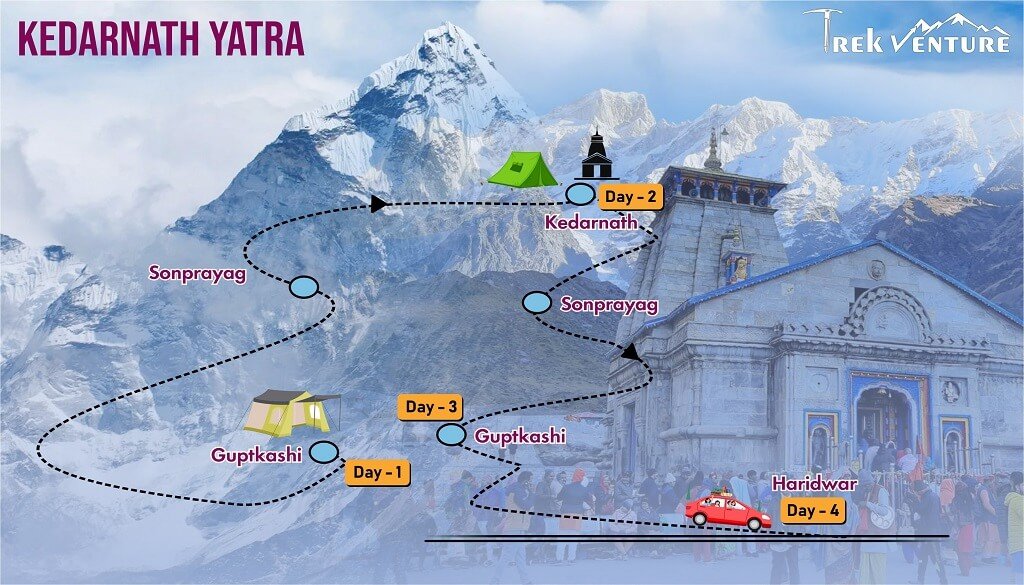
Route & Itinerary of the Kedarnath Yatra
The trek to Kedarnath starts well before first step. The usual base camp for the trek itself is Gaurikund.
Trek Route: Gaurikund – Kedarnath.
There is a well documented 16-kilometer pedestrian route between Gaurikund and the temple. The path, much improved throughout the years, is paved and rimmed with railings for safety.
Length: 16 km (one way)
Starting Point: Gaurikund
Ending Point: Kedarnath Temple
Walk: 6-8hrs (depending on speed and fitness)
Typical Daily Trekking Itinerary:
Day 1: Arrival in Gaurikund
From this place pilgrims generally wait a day or two before trekking further to acclimatise themselves. Gaurikund itself is a place of worship having a hot water spring known as Gauri Kund where pilgrims take bath and offer prayer before visiting the temple. Camp overnight and begin your hike early the following morning.
Day 2: Trek from Gaurikund to Kedarnath Base Camp You will be trekking on this day 2.
Distance: 16 km
Altitude Gain: 1,982 m (6,502 feet) at Gaurikund to 3,583 m (11,755 feet) at Kedarnath.
Highlights of the route: This is a sustained climb. Key halts are Jungle Chatti, Bheembali, Linchauli and then comes the Kedarnath Base Camp about 1 km before the temple. These rest stops have minimum facilities for food and rest. it offers uninterrupted view of Mandakini river valley. Upon arrival at the base camp, you can spend the night in your own tent or a local guesthouse.
DAY 3 Darshan and return trek to Gaurikund, DAY 3 – Darshan and return trek to Gaurikund
Rise with the sun to attend morning aarti at the Kedarnath Temple. Return back to Gaurikund after darshan and sightseeing. You’ll get down more quickly, though it can be tough on the knees. By late afternoon, most return to Gaurikund.
Alternative Travel Options
The temple can also be visited: if you are not able to undertake the pilgrimage:
Helicopter Service: One can avail helicopter service that run from different helipads including Phata, Sersi and Guptkashi. Versus flying, the journey lasts around 8-10 minutes (spectacular views of the Himalayas!). This is a good option for senior citizens or people in hurry. A booking of Kedarnath Yatra by helicopter should also be in advance.
Pony and Palki (Palanquin) Service: At Gaurikund, a pony(or mule) and a palki is also available up to the temple. These services can be purchased on the counters at Gaurikund.
When is the Ideal Time to Visit Kedarnath?
The time that you select for your yatra is very important as it makes the difference between whether you have a good or bad experience. The temple is open to the public for just six months annually.
Pre-Monsoon (May – June) It is the most favoured season for Kedarnath yatra. The climate is normally temperate, sunny and warm. But it is also high season, so there will be big crowds.
Post Monsoon (September to October/November): Some would say this is the best time to go. After the monsoon rains, everything is washed and clean and spectacularly green. The air is cool, skies are a bright blue, and the views of the Himalayan peaks are more clear than usual. There is also less people on the road than what it was before monsoon.
Monsoon (July to August) Best avoided during the yatra. Heavy rainfall, landslides and flash floods are common in the region, adding dangerous elements to the trek.
Winters (Nov to Apr): The temple remains closed in winters as the region receives heavy snowfall. The whole place is snowed under, literally. The idol is shifted to its winter home at Ukhimath.
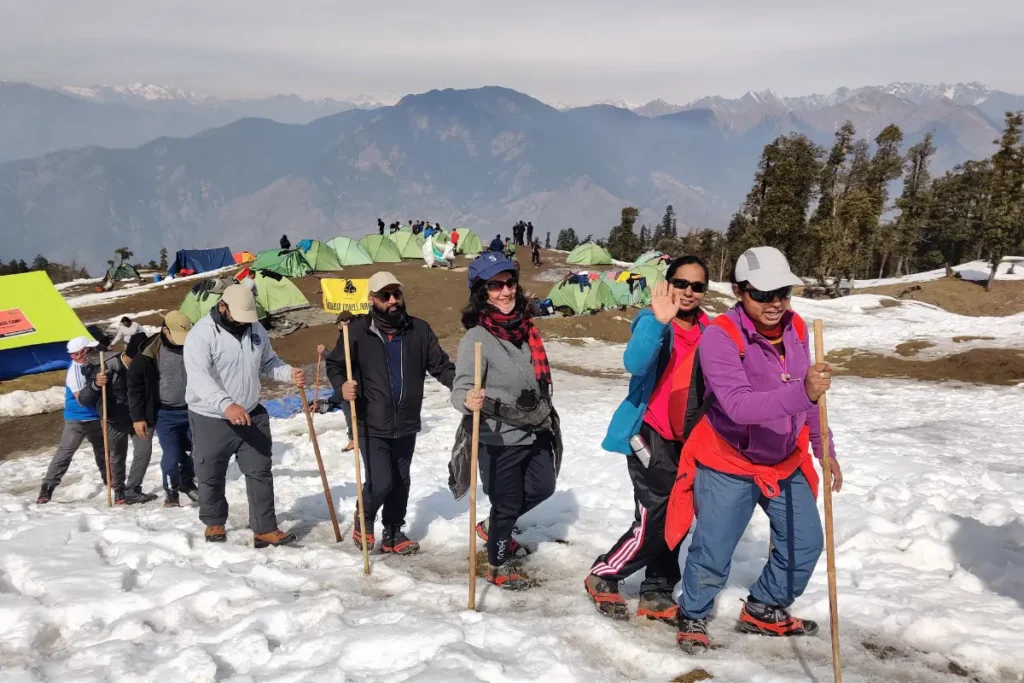
Difficulty Level and Preparation
One should not take Kedarnath Yatra difficulty lightly. It’s a hard high altitude walk and you need to be fit.
Fitness Preparation:
Start planning at least a month ahead.
Add 30-45 minutes doing some cardio work into your workout a few times per week with perhaps jogging, cycling or swimming.
To help build your leg muscles, squat and lunge.
Try walking up a hill or climbing the stairs to mimic trekking scenarios.
Acclimatization Tips:
Altitude sickness is a serious issue. To prevent it:
Ascend slowly. Do not rush the trek.
Drink plenty water to avoid getting dehydrated.
Avoid alcohol and smoking.
Stop immediately if you feel symptoms such as headache, nausea or dizziness. If it continues, fly lower.
What to Pack: The Essentials
The key to having a comfortable journey is to pack smart. So without wasting anytime, let’s move forward with the best of our Kedarnath Yatra tips for packing.
Clothing:
Dress in layers as conditions can change quickly.
Thermal innerwear (top and bottom).
Heavy sweater or fleece jacket.
A waterproof and windproof jacket.
Waterproof trekking pants.
At least 10 pairs of thick woolen socks.
Wool cap, gloves and a scarf, or a balaclava.
Footwear:
Durable, waterproof hiking shoes with a strong grip. Just be sure they’re well broken in.
A comfortable floaters/slippers to be used in camp/guest house.
Trekking Gear:
1 backpack of around 40-50 liters, Cozy pack cover.
Trekking poles to use as stability sticks, especially on the way down.
Headlamp or flashlight (with extra batteries).
Personal Items & First Aid:
Sunscreen, sunglasses and a hat to shield from the sun.
Moisturizer and lip balm.
Personal toiletries.
Simple first-aid kit with medications for headache, fever, stomach ache and personal medications. Carry antiseptic wipes, band-aids (plasters) and blister tape.
Spiritual Items:
And you may like to make small offerings, such as flowers or incense – these can be bought along the way.
Weather Conditions in Kedarnath
The high Himalayas are notoriously unreliable for weather.
May-June:- Daytimes are cool 10°C to 20°C. Nights are quite cold 2°C to 8°C.
September-October: Days are comfortable, ranging from 8°C to16°C but it becomes very cold during the night, with temperatures at times going below freezing point.
Rain and Snow: You may experience showers even in the middle of dry seasons. Fresh snow can fall as early as May and late in October.
Safety and Permits
Your safety is paramount. Observance of mandates smoother” for Pilgrimage Kept safe by observing local rules.
Registration: Registration for the yatra is compulsory for all pilgrims. This may be done on-line or at several registration centres in Haridwar, Rishikesh and elsewhere. The registration is a way for the authorities to monitor pilgrims for safety reasons.
Trekking Guidelines:
Begin your trek early and ensure that you reach Kedarnath before nightfall.
Stay on the designated trail.
Walk slowly and plan rest breaks.
Message your family or friends with your plans.
Temple Entry – Follow the lines at the temple. Taking pictures is not allowed inside the shrine.
Nearby Attractions and Stops
Although the temple is the highlight, there are a few other things to see in the vicinity.
Gaurikund: The trek begins in Gaurikund, famous for its thermal spring and a temple for Goddess Parvati.
Bhairavnath temple: Situated few meters away from Kedarnath. It is believed to be the winter abode of Lord Shiva; The Bhairava in this temple is a deity whose head is worshipped, and where as The body part that includes skull face below neck on right side is to be left open Previous to closing the proceeding of Kedarnath Temple for whole winter during which some bestimmrah dev puja are offered so the Murti (Idol) of God Shri Kedar become more powerful when it’s open for Darshan(visit) only said by priest who serve only Gaddi Bushdhar being Trijern from last 1.5 millennium ago does this job. It provides a scenic view of the Kedarnath valley.
Vasuki Tal: Situated at a distance of 8 km from Kedarnath, Vasuki Tal is a high-altitude lake. It’s a tough hike that pays off with incredible views of the peaks.
Chorabari Tal (Gandhi Sarovar): It is a pristine glacial lake located 4 km from Kedarnath. “Obviously, it’s a beautiful spot but also very sobering since this was the site of the floods in 2013.
Why Opt For The Mountain Trekker for Your Kedarnath Yatra?
It is also hard work planning a visit of this magnitude. That’s where we come in. Certainly, the Kedarnath Yatra package from The Mountain Trekker will fulfil your aspirations of a smooth, secure and life-altering journey.
Local Guides: Don’t take local wrong; they aren’t just our guides, these guides are born and brought up in this mountain family. They know the trails, the ethic, and the legends that haunt every peak and valley.
Safety Without Sacrifice: Your safety is our number one concern. We have medically trained staff and bring oxygen cylinders, complete first-aid kits and protocols for any emergencies.
Smooth Scheduling: Since those who ride with us do everything from transport and lodging to permits and meals, we take care of the details. You can leave your worries behind and immerse yourself in your spiritual pilgrimage. We made Kedarnath Yatra booking easy and transparent.
Join with a team that knows the mountains and who holds the pilgrimage holy.
Ready to start your spiritual journey? Contact us to get bookings done for your kedarnath yatra.
📞 Phone: +91 9650644062, +91 7060358231
📧 Email: info@themountaintrekker.com
👉 Book Now – (Kedarnath Yatra Booking Page link) 🙏 Importance of Kedarnath Journey {Why People should visit Kedarnath once in life} Kedarnath Temple is one of the holy shrines among twelve jyotirlingas.

Frequently Asked Questions (FAQs)
Which is the best time to visit Kedarnath?
The ideal seasons are pre-monsoon (May-June) and post-monsoon (September-October). These months have the most pleasant weather. During post-monsoon, the views tend to be clearer and there are fewer people around.
Is the trek for beginners?
Yes you can, the hike is easy Enought for good fit beginners. The track is decent and all way steep,continuous climb. It is very important to condition the body atleast for a month prior to the trek.
How do I reach Gaurikund?
The starting point of the trek is Gaurikund. The closest accessible town is Rudraprayag and the nearest airport is Dehradun’s Jolly Grant Airport. Gaurikund is well connected by road from major cities such as Rishikesh, Haridwar or Dehradun from where you can hire a taxi or take a bus to reach Gaurikund.
What is the price of Kedarnath Yatra package?
It is the cost that changes depending upon the duration, inclusions (transport and accommodation or meals) and mode of travel (trekking vs. helicopter). The Mountain Trekker has a variety of packages depending on your budget. Availability on request – please contact us for a price quotation.
Is it OK to bring children on the hike?
There is no official age limit, but this trek will be difficult and take you at a high altitude. It’s not considered safe for young kids overall. It may be, for school-age kids who have done some trekking and are in good shape. The smart thing to do is check with us and a doctor before tricking children into such arduous things like the yatra.


